Kosovo Pavilion explores "erasure of regional identity" with spiky tower installation
Venice Architecture Biennale 2014: visitors to Kosovo's exhibition at the Venice Biennale can walk inside a spiky circular tower built from 692 wooden stools (+ slideshow).
Prompted by the Absorbing Modernity theme set by biennale director Rem Koolhaas – asking national pavilions to address the last 100 years in architecture – curator Gëzim Paçarizi focussed on how Modernism can be associated with Kosovos's political upheaval.
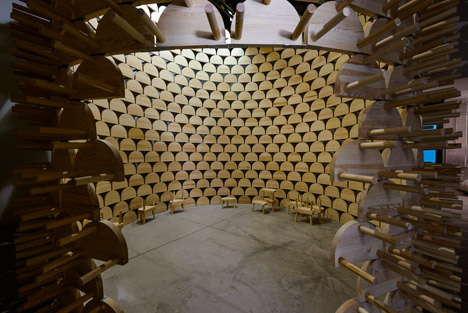
Entitled Visibility: Imposed Modernity, the exhibition looks at how the move from an autonomous and democratic order towards a more centralised form of government at the start of the 20th century was responsible for the destruction of neighbourhoods, making room for large modern structures.
"That's why Kosovo has never absorbed modernity. Modernity has been a synonym of destruction and foreign aesthetics," said Paçarizi.
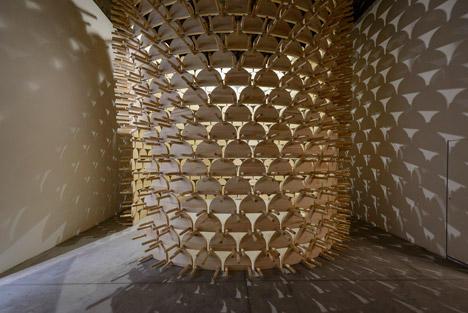
The exhibition centres around the spiky tower. This is built from "shkambis" – traditional wooden stools that have been in use in Kosovo for over 10,000 years.
"The tower aims to creates relation between the past and the present, by making architecture from the oldest and simplest furniture element," said Paçarizi.
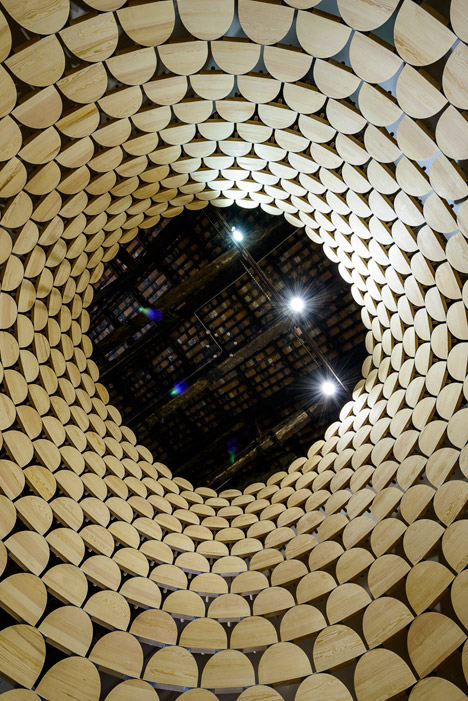
This is accompanied by a wall of 360 postcards. Each one shows a different image on the front and back – presenting buildings and spaces both as they were and as they are now.
"The old parts of the cities are disappearing every day and this exhibition is a cry to help preserve what is left," added Paçarizi.
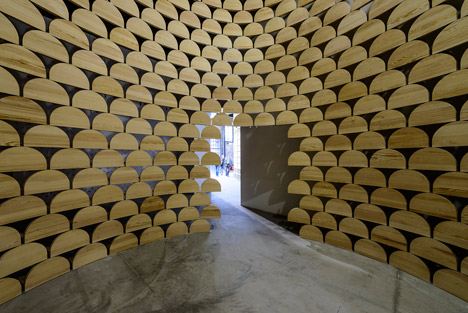
The Kosovo Pavilion is located at the Arsenale, as part of the 14th Venice Architecture Biennale.
Follow Dezeen's coverage of the exhibition »
Here's a project description from the exhibition organisers:
"Visibility" (Imposed Modernity)
"Then rained down into the high fantasy..." Dante Alighieri Purgatorio XVII. 25
Kosovo can be a case study of erasure of the rich regional urban culture in the name of Modernity. In the beginning of the XX century, self-regulated democratic urban order has been replace with government urban control, foreign to local customs and culture, producing 100 years of disorder. Our exhibition is about the process of making visible what we have lost and what we are left with during this painful period.
Under programs unknown to the indigenous people. the socialist government has destroyed the neighbourhoods to make way for new buildings, enlarged streets and straightened the rivers. Organic cities, close to nature, built on a human scale and with natural materials, were transformed.
That's why Kosovo has never absorbed modernity. Modernity has been a synonym of destruction and foreign aesthetics.
Exhibition plays with the idea of visibility and erasure.
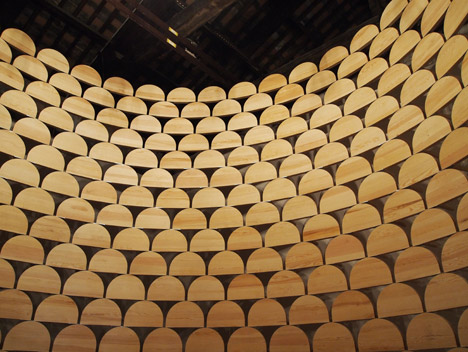
"Shkambi" Tower
The circular tower is build by 692 "shkambi" traditional chairs. "Shkambi" in Albanian is avery old word meaning chair and rock at the same time. The traditional chair itself is the oldest part of furniture which have passed centuries almost unchanged until the present day.
Each "Shkambi" stool is 41x27x27 centimetres, made from the wood. The 692 elements are put together in circle of 5 metres and 5.5 metres high, in 20 circles. Visitors enter inside the tower; opening about the door size will be opened on one side. 17 chairs will be disposed in the exhibition space for visitors sitting.
The tower aims to create relation between the past and the present, by making architecture from the oldes [image cuts off]and simplest furniture element.
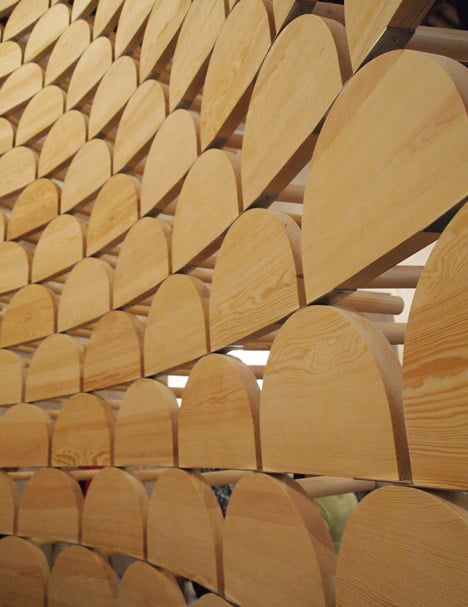
"Postcard wall"
360 images printed postcard size 21x14.8cm are images from Kosovo in two states, before modernity and after, showing slow but absolute erasure of regional identity. Each card shows images, old and new, presenting confusion and mixture of the Kosovo cities today.
The old parts of the cities are disappearing every day and this exhibition is a cry to help preserve what is left.
"Shkami-stool"
In the Albanian tradition "shkami" is a wooden stool comprised of a hemispherical plate and three wooden legs, which expand towards the ground, mostly without decorative additions. It is the oldest single piece of furniture to have remained almost unchanged throughout the centuries up to the present day.
Since early antiquity "shkami", the three-legged stool, has occupied an important place within both the Balkan and European traditions. It dates back 10 to 40 thousand years and, is historically, a piece of furniture which does not require any metallic components.
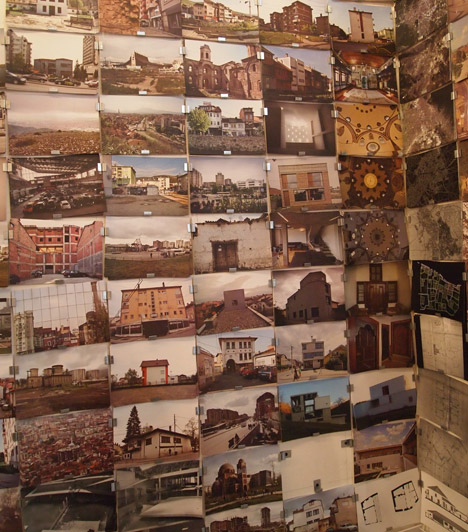
Over the centuries, it has been adapted and adjusted aesthetically –according the region– and has gained a variety of looks and shapes, from triangular to oval, hemispherical, sometimes with decorative attributes but more often than not without.
Some linguists believe that the source of the word "shkami" can be found in Latin and the eminent linguist Vladimir Orel gives the following explanation in his etymological dictionary: shkemb, shkamb m.pl. Shkembinj, shgembe, rock' borrowed from Latin scamnum – 'bench, throne'. The meaning 'rock developed from an earlier 'slope'. Eqrem QABEJ, the most eminent Albanian linguist is of the opinion that this word was borrowed from the Greek language of Attica.
In Balkan ethnography and ethnology "shkami" the three legged stool occupies an important place in society, not only as a piece useful household furniture, but also as a totemic object with miraculous functions: enticing prosperity, fortune and curative powers. On occasion it was also believed to play a magical role, for example, as an empowering object enabling vision of supernatural species.